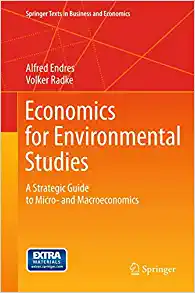Question
EXPLAIN IN DEPTH ALL. 1400 words if possible Something is referred to as a double-edged sword if it can have both favorable and unfavorable consequences.
EXPLAIN IN DEPTH ALL. 1400 words if possible
Something is referred to as a "double-edged sword" if it can have both favorable and unfavorable consequences. In what way might government bailouts of failing companies or financial institutions be a double-edged sword?
- Give an example of each of the following:
- a. A good that is rivalrous in consumption and is excludable.
- b. A good that is nonrivalrous in consumption and is excludable.
- c. A good that is rivalrous in consumption and is nonexcludable.
- d. A good that is nonrivalrous in consumption and is nonexcludable.
- Identify each of the following as an adverse selection or a moral hazard problem
- a. A person with car insurance fails to lock his car doors when he shops at a mall.
- b. A person with a family history of cancer purchases the most complete health coverage available.
- c. A person with health insurance takes more risks on the ski slopes of Aspen than he would without health insurance.
- d. A college professor receives tenure (assurance of permanent employment) from her employer and begins to work less hard.
- e. A bank gives out a loan to a person who does not have a stable job.
- Using the data in the accompanying table, answer the following questions:
- a. For which good does Canada have a comparative advantage?
- b. For which good does Italy have a comparative advantage?
- c. What might be a set of favorable terms of trade for the two countries?
- d. Prove that both countries would be better off in the specialization-trade case than in the no-specialization-no-trade case.
- In the accompanying figure,
PW is the world price and PW + T is the world price plus a tariff. Identify the following:
a. The level of imports at PW
b. The level of imports at PW + T
c. The loss in consumers' surplus as a result of a tariff
d. The gain in producers' surplus as a result of a tariff
e. The tariff revenue received by the government as a result of a tariff
f. The net loss to society as a result of a tariff
g. The net benefit to society of moving from a tariff to no tariff Explain your answer.
Reference
Arnold, R. A. (2019).Economics(13th ed.). Cengage Learning.
Step by Step Solution
There are 3 Steps involved in it
Step: 1

Get Instant Access to Expert-Tailored Solutions
See step-by-step solutions with expert insights and AI powered tools for academic success
Step: 2

Step: 3

Ace Your Homework with AI
Get the answers you need in no time with our AI-driven, step-by-step assistance
Get Started


